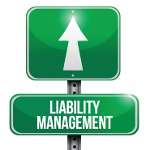By Andres Avila
Saxe Doernberger & Vita, P.C.
Tennessee’s Supreme Court recently held that an insurer may not withhold repair labor costs as depreciation when the policy definition of actual cash value is found to be ambiguous. Tennessee joins other states like California and Vermont that prohibit the depreciation of repair labor costs in property policies.
In Lammert v. Auto-Owners (Mut.) Ins. Co., No. M201702546SCR23CV, 2019 WL 1592687, the Lammerts and other insureds sought property damage coverage from Auto Owners Insurance for hail damage to a home and other structures they owned in Tennessee.
Auto-Owners Insurance agreed to settle the claims on an actual cash value basis (ACV), which is a method of establishing the value of insured property that must be replaced to determine the indemnity by the insurer. There are multiple methods to calculate ACV. Auto-Owners decided to use the ACV calculation method of deducting depreciation from the cost to repair or replace the damaged property. Depreciation is the decline in value of a property since it was new because of use, age or wear. The rationale behind this method is that an insured should not make a profit by recovering the cost of, for example, a new roof for a damaged roof that was ten years old, and thus depreciation is deducted from the indemnity.
Auto-Owners, however, decided to deduct both the materials and the repair and replace labor costs, as depreciation, when calculating the ACV. Neither of both policies under dispute specifically mentioned that repair labor costs could be depreciated in their ACV definitions. The parties thus disagreed on whether depreciation applies only to the materials or to both materials and repair labor.
One of the policies defined ACV as “the cost to replace damaged property with new property of similar quality and features reduced by the amount of depreciation applicable to the damaged property immediately prior to the loss;” while the other did not define ACV but stated that ACV included a deduction for depreciation.
The insureds argued that depreciation should be limited only to the cost of the replacement materials. In their view, the language “depreciation applicable to the damaged property” eliminates labor costs, which are intangible and cannot be depreciated because they do not age or wear out. The insureds also argued that the “prior to the loss” policy language eliminated labor costs because the costs at issue were post-loss repair costs. Auto-Owners contended that neither policy was ambiguous because depreciation of a property is calculated based on the total replacement cost, which includes both labor and materials.
Allowing Auto-Owners to depreciate the cost of labor would leave the insureds with an out of pocket loss inconsistent with the principle of indemnity of insurance to make insureds whole. However, allowing the deduction may in turn cause a windfall to the insureds, also defeating the purpose of indemnity. The Tennessee Supreme Court sided with the policyholders and solved the dilemma by citing to case law from, among others, Oklahoma, Arkansas, Nebraska and Minnesota, as well as regulations in Vermont, California and Mississippi.
The Court noted that Oklahoma uses the “broad evidence” rule to determine ACV. This method, also followed in New York, allows insurers to consider any and every fact and circumstance that logically tends to a correct estimate of the loss.
Accordingly, in Redcorn v. State Farm Fire & Cas. Co., 55 P.3d 1017, 1020 (Okla. 2002), the Oklahoma Supreme Court ruled that repair labor must be depreciated under the “broad evidence” method.
A decade later, the Arkansas Supreme Court was more persuaded by the dissenters than the majority in Redcorn and concluded that labor was not depreciable because labor does not lose value due to wear and tear over time in Adams v. Cameron Mutual Insurance Co., 2013 Ark. 475, 430 S.W.3d 675 (2013). However, in 2017 the Arkansas legislature abrogated Adams and enacted Arkansas Statute section 23-88-106, which specifically included the cost of labor in its definition of an expense depreciation.
The Tennessee Supreme Court further noted that Nebraska, which also uses the “broad evidence” rule, sided with the Oklahoma Supreme Court majority. It held that property is a combination of materials and labor and thus repair labor costs must also be depreciated from the replacement cost to determine ACV. Henn v. American Family Mutual Insurance Co., 295 Neb. 859, 894 N.W.2d 179 (2017). The court also considered a third approach from Minnesota, which also follows the “broad evidence” rule. In Wilcox v. State Farm Fire & Cas. Co., 874 N.W.2d 780, 785 (Minn. 2016), the Minnesota Supreme Court held that certain labor costs may be depreciable making it an issue of fact rather than law.
The Court then turned for guidance to case law from the federal circuit courts of appeals involving the law of Missouri, Kansas and Kentucky. The Tennessee Court found that Missouri and Kentucky lean towards allowing insurers to deduct repair labor costs as depreciation; while Kentucky, on the other hand, leans towards seeing depreciation as an ambiguous term and thus interpreted against insurers, preventing carriers from subtracting repair labor costs as depreciation.
The Tennessee Court then turned to insurance departments’ regulations of the point in California, Vermont and Mississippi. California (Cal. Code Regs. tit. 10, § 2695.9(f)(1) (2019)) and Vermont (Insurance Bulletin No. 184) prohibit the depreciation of repair and replacement labor. On the other hand, the Mississippi Insurance Department Bulletin 2017-8 declared the absence of a statutory prohibition to labor costs depreciation in that state but that insurers should clearly provide for it in the insurance policy if they intended to do so.
Tennessee acknowledges both the “broad evidence” rule and the replacement-cost-less-depreciation method to determine ACV. The Tennessee Supreme Court was persuaded that, since neither of the policies explicitly stated whether labor costs are depreciable when calculating ACV, there was an ambiguity that had to be interpreted against insurers and in favor of insureds.
This decision in Tennessee serves as a warning that, absent policy language stating otherwise, property insurers cannot depreciate repair labor costs when calculating the ACV of a property using the replacement cost less depreciation method in Tennessee.








